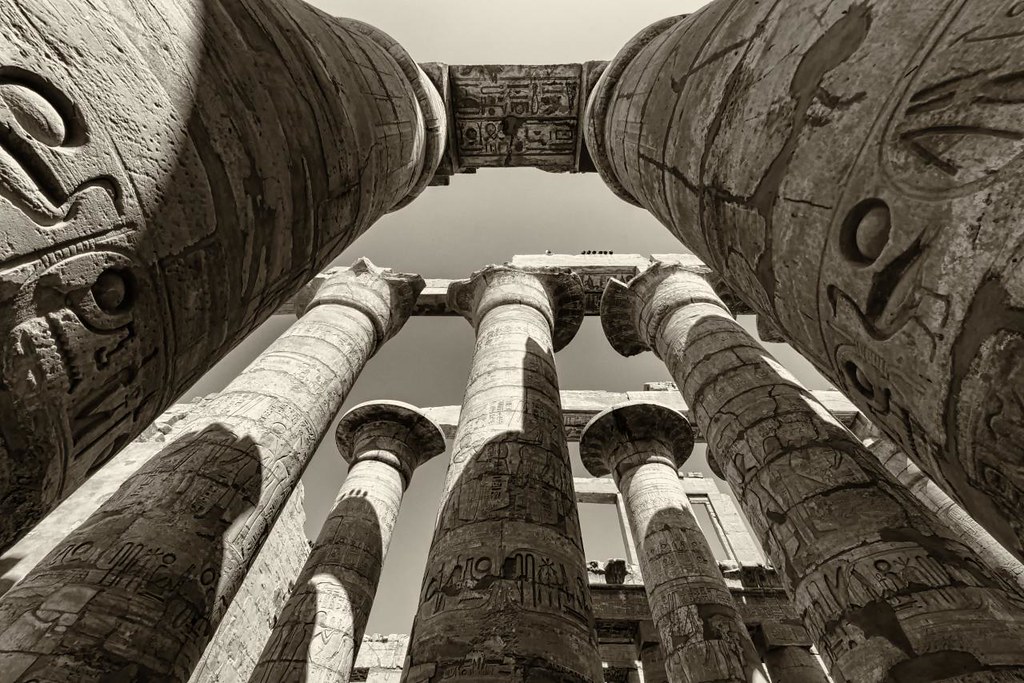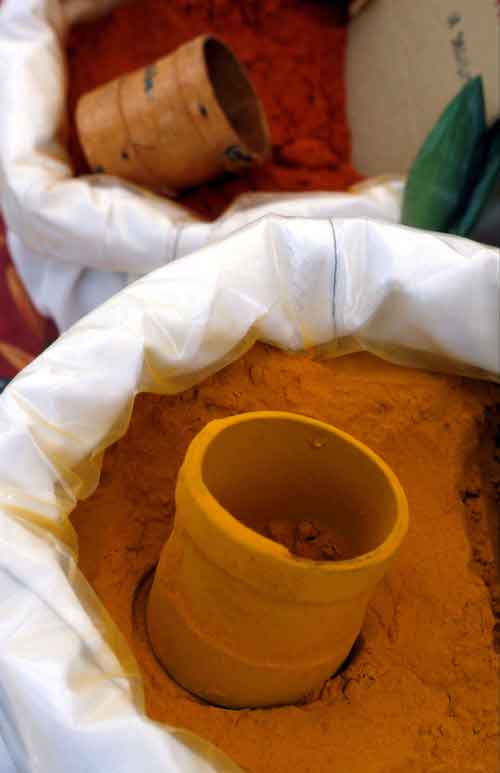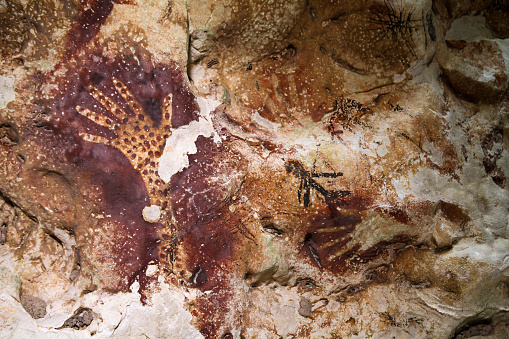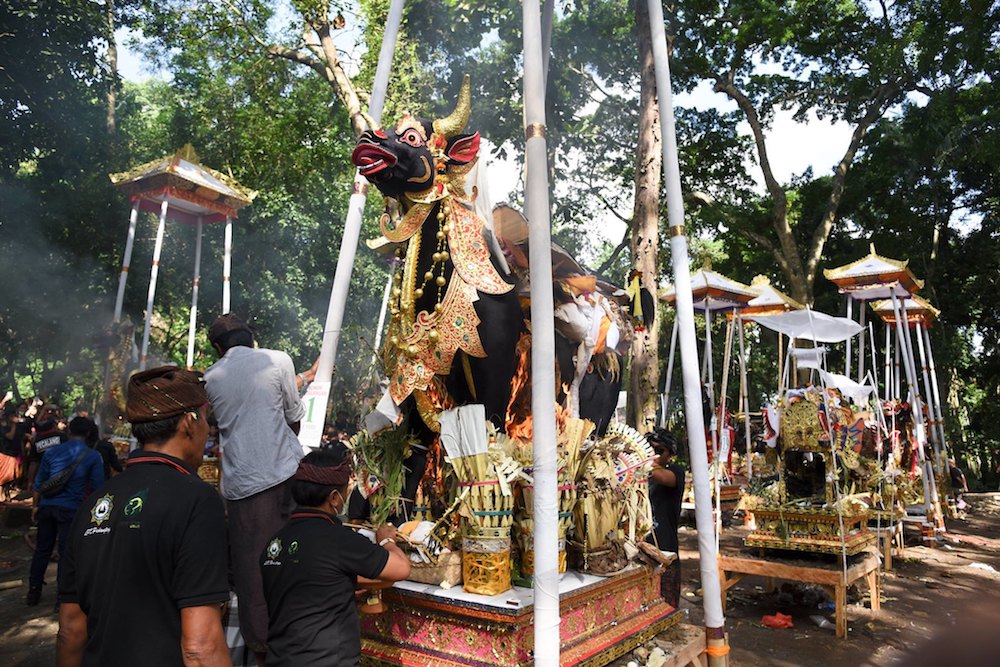How Did Belief Evolve?

About 20 years ago, the residents of Padangtegal village in Bali, Indonesia, had a problem. The famous, monkey-filled forest surrounding the local Hindu temple complex had become stunted, and saplings failed to sprout and thrive. Since I was conducting fieldwork in the area, the head of the village council, Pak Acin, asked me and my team to investigate.
We discovered that locals and tourists visiting the temples had previously brought food wrapped in banana leaves, then tossed the used leaves on the ground. But when plastic-wrapped meals became popular, visitors threw the plastic onto the forest floor, where it choked the young trees.
I told Acin we would clean up the soil and suggested he enact a law prohibiting plastic around the temples. He laughed and told us a ban would be useless. The only thing that would change people’s behavior was belief. What we needed, he said, was a goddess of plastic.
Over the next year, our research team and Balinese collaborators didn’t exactly invent a Hindu deity. But we did harness Balinese beliefs and traditions about harmony between people and environments. We created new narratives about plastic, forests, monkeys, and temples. We developed ritualistic caretaking behaviors that forged new relationships between humans, monkeys, and forests.
As a result, the soils and undergrowth were rejuvenated, the trees grew stronger and taller, and the monkeys thrived. Most importantly, the local community reaped the economic and social benefits of a healthy, vigorous forest and temple complex.
Acin taught me that science and rules cannot ensure lasting change without belief—the most creative and destructive ability humans have ever evolved.
Most people assume “belief” refers to religion. But it is so much more. Belief is the ability to combine histories and experiences with imagination, to think beyond the here and now. It enables humans to see, feel, and know an idea that is not immediately present to the senses, then wholly invest in making that idea one’s reality.
We must believe in ideas and abilities in order to invent iPhones, construct rockets, and make movies. We must believe in the value of goods, currencies, and knowledge to build economies. We must believe in collective ideals, constitutions, and institutions to form nations. We must believe in love (something no one can clearly see, define, or understand) to engage in relationships.
In my recent book, Why We Believe, I explore how we evolved this universally and uniquely human capacity, drawing on my 26 years of research into human and other primates’ evolution, biology, and daily lives. [1] [1] Portions of this essay come from the author’s book Why We Believe (Yale University Press, 2019). Our 2-million-year journey to complex religions, political philosophies, and technologies essentially follows a three-step path: from imagination to meaning-making to belief systems. To trace that path, we must go back to where it started: rocks.
A little over 2 million years ago, our genus (Homo) emerged and pushed the evolutionary envelope. Its hominin ancestors had been doing pretty well as socially dynamic, cognitively complex, stone tool–wielding primates. But Homo ratcheted up reliance on one another to better evade predators, forage and process new foods, communally raise young, and fashion superior stone tools.
One of the skills that helped Homo succeed was imagination—an ability you can use now to picture how it developed.
Imagine an early Homo preparing the evening meal. She knows stones can be hit and flaked to form sharper utensils that cut and chop. She also knows the stone tools her ancestors made don’t do a particularly great job: They take a long time to hack the raw meat off a carcass, to smash and grind the roots the community has dug up, and to crack open bones and scoop out the delicious marrow.
One day she looks at her brethren laboring to create simple, one-sided, flaked stone tools. She sees, in her mind’s eye, flakes being removed from both sides, further sharpening the edges and balancing the shape. She creates a mental representation of a possibility—and she makes it her reality.
She and her descendants experiment with more extensive reshaping of stones—creating, for example, Acheulean hand axes. They begin to predict flaking patterns. They conceive of more diverse instruments for slicing roots and raw meat, and carving bone and wood. They translate private musings and imaginings into communal realities. When they make a discovery, they teach one another, speeding up the invention process and expanding the possibilities of their efforts.
By 500,000 years ago, Homo had mastered the skill of shaping stone, bone, hides, horns, and wood into dozens of tool types. Some of these tools were so symmetrical and aesthetically pleasing that some scientists speculate toolmaking took on a ritual aspect that connected Homo artisans with their traditions and community. These ritualistic behaviors may have evolved, hundreds of thousands of years later, into the rituals we see in religions.
With their new gadgets, Homo chopped wood, dug deeper for tubers, collected new fruits and leaves, and put a wider variety of animals on the menu. These activities—expanding their diets, constructing new ecologies, and altering the implements in their environment—literally reshaped their bodies and minds.
In response to these diverse experiences, Homo grew increasingly dynamic neural pathways that allowed them to become even more responsive to their environment. During this time period, Homo’s brains reached their modern size.
But their brains didn’t uniformly enlarge. Parts of the frontal lobes—which play critical roles in emotional, social, motivational, and perceptual processes, as well as decision-making, attention, and working memory—expanded and elaborated at an increased rate.
Another brain organ that ballooned was the cerebellum. Over the course of hominin history, our lineage added approximately 16 billion more cerebellar neurons than would be expected for our brain size. This ancient brain organ is involved with social sensory-motor skills, imitation, and complex sequences of behavior.
These structural changes helped Homo generate more effective and expansive mental representations. What emerged was a distinctively human imagination—the capacity that allows us to create and shape our futures. It also gave rise to the next step in the evolution of belief: meaning-making.
The rise of imagination sparked positive feedback loops between creativity, social collaboration, teaching, learning, and experimenting. The advent of cooking opened up a new landscape of foods and nutrient profiles. By boiling, barbecuing, grinding, or mashing meat and plants, Homo maximized access to proteins, fats, and minerals.
This gave them the nutrition and energy necessary for extended childhood brain development and increased neural connectivity. It allowed them to travel greater distances. It enabled them to evolve neurobiologies and social capacities that made it possible to move from imagining and making new tools to imagining and making new ways of being human.
By about 200,000 years ago, Homo had begun to push the artistic envelope. Groups of Homo sapiens were coloring their stone tools with ochres—red, yellow, and brown pigments made of iron oxide. They were likely also using ochres to paint their bodies and cave walls.
Ochre decoration requires far more complicated cognitive processes than, for example, an Australasian bowerbird arranging sparkling glass and other baubles around its nest to attract a mate. It requires the kind of complex creative sequences made possible by elaborate frontal lobes, a dense cerebellum, and more diverse and intricate social relationships.
Imagine an early Homo sapiens who wants to paint a stone ax. She and her companions must seek out specific types of rocks and use a tool to scrape off the iron oxides. Then, they might manipulate the minerals’ chemistry, mixing them with water to transform them into pigments or heating them to turn them from yellow to red. Finally, they must apply the paint to the ax, changing how light reflects off its surface—making it look different, making it into a new thing.
When early humans colored something (or someone) red or yellow, it changed the way they perceived that tool, that cave, that person. They were using their imagination to reshape their world to match their desired perceptions of it. They were imbuing objects and bodies with a new, shared meaning.
Gradually, they established relations with more and more distant groups, sharing meanings for the items they swapped and the interactions they exchanged. In short, Homo sapiens began engaging full time in meaning-making.
Collective meaning-making changes the way humans perceive and experience the world. It enables us to do the wildly imaginative, creative, and destructive things we do. It is during this period that Homo broke the boundaries of the material and the visible so the realm of pure imagination could be made tangible.
When a typhoon smashes into land, it tosses trees like matchsticks and fills the air with a deafening roar that drowns out voices. For millennia, every animal caught in such a storm feared it, hunkered down, and waited for it to pass. But at some point, members of the genus Homo began to explain it.
We don’t know when it happened, but within the last few hundred thousand years, humans had developed the imagination, the thirst for meaning, and the communication skills necessary for creating explanations of mysterious phenomena.
By 300,000 to 400,000 years ago, human groups across the planet were sparking fires with sticks and stones, and carefully transporting the flames. And by 80,000 years ago, they were carrying water in intricately carved ostrich eggshells. They made glues to craft containers, adorned themselves with beads, painted with multi-ingredient pigments, and etched geometric patterns into shells, stones, and bones.
These kinds of hyper-complex, multi-sequence behaviors cannot simply be imitated. They require explanation. So, when researchers see multiple instances of abstract art and creative crafts, we assume individuals were engaging in deep, intricate communication based on shared meanings.
By at least 40,000 to 50,000 years ago, representational art arose: depictions of hunts, animal-human hybrids, blazing sunsets, and hand prints waving, as if they are signaling meaning across the deep gap of time.
Once groups are attributing shared meaning to objects they can manipulate, it is an easy jump to give shared meaning to larger elements they cannot change: storms, floods, earthquakes, volcanoes, eclipses, and even death. We have evidence that by at least a few hundred thousand years ago, early humans were placing their dead in caves. Within the past 50,000 years, distinct examples of burial practices became more and more common.
Through language, deeply held thoughts and imaginings could be transferred rapidly and effectively from individuals to small groups to wider populations. This created large-scale shared structures of meaning—what we call belief systems.
Between about 4,000 to 15,000 years ago, numerous radical transitions occurred in many populations. Humans started to domesticate plants and animals. They developed, along with agriculture, substantial food storage capacities and technologies. Concepts of property and inequality emerged. Towns and, eventually, cities grew. All of this led to the formation of multi-community settlements with stratified political and economic structures.
This restructuring profoundly shaped, and was shaped by, belief systems. Toward the end of this period—by 4,000 to 8,000 years ago—we see clear evidence of formal religious institutions: monuments, gathering places, sanctuaries, and altars.
There are numerous explanations for the evolution of religions, and none of them by itself is satisfactory. Some proposals are psychological: Our ancestors understood that other individuals have different mental states, motivation, and agency, so they attributed those same qualities to supernatural agents to explain everything from lightning to illness.
Other researchers note that the rise of huge, hierarchical communities that engaged in large-scale cooperation and warfare correlated with the rise of far-reaching, hierarchical religions with powerful, moralizing deities. Some scientists posit that “big groups” prompted the creation of “big gods” who could enforce order and cooperation in unruly societies. Other researchers hypothesize the reverse: that humans first created “big god” religions in order to coordinate larger and larger social groups.
Still other experts say the human capacity for imagination became so expansive it reached beyond the real and the possible into the unreal and the impossible. This generated the capacity for transcendence—a central feature in the religious experience.
But though belief can be transcendent, creative, and unifying, not all of humanity’s beliefs are beneficial.
For example, many humans today believe the world should be exploited for our benefit. Many believe that racial, gendered, and xenophobic inequalities are a “natural” result of inherent differences. Many believe in religious, scientific, or political fundamentalism, which is often used as a weapon against other belief systems.
Over the past 2 million years, we have evolved a capacity that has benefited humans but can also introduce horrible possibilities. It is up to us to manage how we use this power.
Now that we have asked, Why do we believe?, we should ask, What do we want to believe, for the sake of humanity?
This article was republished on discovermagazine.com.



































